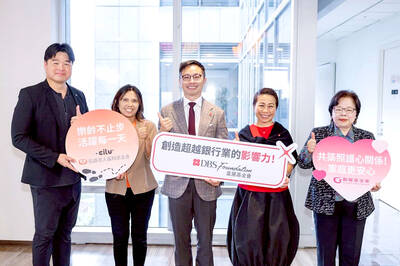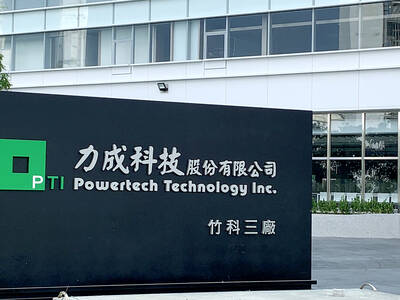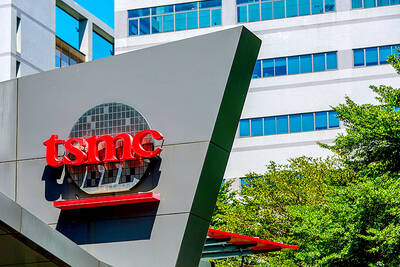For more than three decades, Taiwanese have been proud of the nation's exceptional economic strength and dominance in the world's high-tech manufacturing industry.
With minimal resources, an economic fable was created on the back of greater than 10 percent growth in GDP during the 1970s.
Confidence in the nation's economy has been sustained in recent years, even after the emergence of China as a huge economic player.
But the release of the latest IMD World Competitiveness Yearbook yesterday may give some observers reason to pause.
In the IMD's scoreboard of 55 countries' competitiveness, China for the first time surpassed Taiwan as a more competitive country to do business. China moved up from No. 18 to No. 15, while Taiwan fell from No. 17 to No. 18.
On the four major factors, Taiwan saw economic performance improve to No. 16 from No. 25 last year, government efficiency improved to No. 20 from No. 23, while business efficiency fell to No. 17 from No. 13 and infrastructure declined from No. 18 to No. 21.
IMPROVING
The yearbook said Taiwan is improving and is categorized in the groups of countries that are "catching up" to the leader, the US, compared with another group of countries that are "losing ground."
"Taiwan halted its downward fall of last year, now maintaining competitiveness despite the more difficult global environment and in the face of a fast-growing China and other emerging nations," Suzanne Rosselet, deputy director of IMD World Competitiveness Center, wrote in an e-mail to the Taipei Times yesterday.
"Most likely, Taiwan may even be `riding the wave' of China's high growth, finding opportunities for investment and others," she wrote.
Rosselet's comment was encouraging, but the government sought accountability elsewhere for the IMD poll result.
Council of Economic Planning and Development Chairwoman Ho Mei-yueh (
Rosselet said the reasons for Taiwan's decline included difficulty in maintaining high attractiveness for investment because of uncertainty in the political and business environment, and obstacles hindering the ability of enterprises to compete, such as over-regulation.
The ranking for government efficiency, though up three notches to No. 20, was still too low, demonstrating continuing poor faith in the government's ability to create an environment that supports the competitiveness of business, Rosselet said.
The government prefers to compare itself with neighboring nations to show that Taiwan still has a vibrant economy even in the face of an expanding China, but the fact is that Taiwan's GDP last year was the lowest among the four little dragons at 4.62 percent.
RIVALS
Singapore, a city state with even less resources than Taiwan, reported a stunning 7.9 percent growth in GDP last year and was graded by IMD as the world's second most competitive country, while Hong Kong's GDP stood at 6.8 percent last year and ranked No. 3 in the competitiveness chart.
South Korea, which has long been considered the smallest dragon of the four, saw 5 percent GDP growth last year, with competitiveness advancing from No. 32 to No. 29.
The government can derive some satisfaction from its current economic performance considering the progress of overall industrial development, but it will also need to look more carefully at warning signs, as once evenly matched competitors move farther into the lead, and as laggards catch up.

The DBS Foundation yesterday announced the launch of two flagship programs, “Silver Motion” and “Happier Caregiver, Healthier Seniors,” in partnership with CCILU Ltd, Hondao Senior Citizens’ Welfare Foundation and the Garden of Hope Foundation to help Taiwan face the challenges of a rapidly aging population. The foundation said it would invest S$4.91 million (US$3.8 million) over three years to foster inclusion and resilience in an aging society. “Aging may bring challenges, but it also brings opportunities. With many Asian markets rapidly becoming super-aged, the DBS Foundation is working with a regional ecosystem of like-minded partners across the private, public and people sectors

BREAKTHROUGH TECH: Powertech expects its fan-out PLP system to become mainstream, saying it can offer three-times greater production throughput Chip packaging service provider Powertech Technology Inc (力成科技) plans to more than double its capital expenditures next year to more than NT$40 billion (US$1.31 billion) as demand for its new panel-level packaging (PLP) technology, primarily used in chips for artificial intelligence (AI) applications, has greatly exceeded what it can supply. A significant portion of the budget, about US$1 billion, would be earmarked for fan-out PLP technology, Powertech told investors yesterday. Its heavy investment in fan-out PLP technology over the past 10 years is expected to bear fruit in 2027 after the technology enters volume production, it said, adding that the tech would

Taiwan Semiconductor Manufacturing Co (TSMC, 台積電) has secured three construction permits for its plan to build a state-of-the-art A14 wafer fab in Taichung, and is likely to start construction soon, the Central Taiwan Science Park Bureau said yesterday. Speaking with CNA, Wang Chun-chieh (王俊傑), deputy director general of the science park bureau, said the world’s largest contract chipmaker has received three construction permits — one to build a fab to roll out sophisticated chips, another to build a central utility plant to provide water and electricity for the facility and the other to build three office buildings. With the three permits, TSMC

YEAR-END BOOST: The holiday shopping season in the US and Europe, combined with rising demand for AI applications, is expected to drive exports to a new high, the NDC said Taiwan’s business climate monitor improved last month, transitioning from steady growth for the first time in five months, as robust global demand for artificial intelligence (AI) products and new iPhone shipments boosted exports and corporate sales, the National Development Council (NDC) said yesterday. The council uses a five-color system to measure the nation’s economic state, with “green” indicating steady growth, “red” suggesting a boom and “blue” reflecting a recession. “Yellow-red” and “yellow-blue” suggest a transition to a stronger or weaker condition. The total score of the monitor’s composite index rose to 35 points from a revised 31 in August, ending a four-month